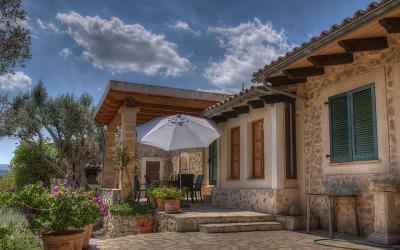LA HIBRIDACIÓN GENÉRICA EN LA NOVELA POSTMODERNA COMO AGUA PARA CHOCOLATE DE LAURA ESQUIVEL
GENERIC HYBRIDIZATION IN THE POSTMODERN NOVEL: THE CASE OF LAURA ESQUIVEL'S WORK BITTER CHOCOLATE
DOI: https://doi.org/10.51896/caribe/KCFQ4167
Fecha recibido: 02/04/2021 | Fecha publicado: 24/06/2021 | Fecha corregido: 20/06/2021 |Autores
Bouziane Sara, Dr. Harfouchi Nachida
RESUMEN:
Después del gran éxito producido por la nueva novela, representado por los escritores del Boom latinoamericano, la narrativa hispanoamericana ha seguido floreciendo en la época postmoderna. A mediados de la década de los años 1970, la novela hispanoamericana ha experimentado cambios formales, discursivos, verbales y temáticos tan significantes que la han llevado a reemplazar a la prestigiosa novelística del Boom. La novela postmoderna se define por la fragmentación, la hibridación (cultural y genérica), la deconstrucción, la intertextualidad, la interculturalidad, el collage, la heterogeneidad, el pluralismo y la metaficción. Este artículo tiene como objetivo principal cómo se efectúa la hibridación genérica en la novela postmoderna Como agua para chocolate de Laura Esquivel (1989), una verdadera obra de arte de la literatura latinoamericana postmoderna. Para realizar el trabajo de investigación, se han seleccionado tres géneros narrativos: la receta, el folletín o la novela por entregas y el diario. Para llevar a cabo este estudio nos hemos basado sobre Lo hibrido: culturas y literatura hispanoamericana de Eduardo Izquierdo (2005) y Poética de la hibridez en la literatura mexicana postmoderna de Nicolas Baluter (2014). A raíz de responder a la problemática planteada, se ha podido concluir que la obra seleccionada, es un ejemplo clásico de hibridación genérica, ya que en dicha obra coexisten el diario, la carta, el folletín, las letras del bolero, las recetas, los amores, los remedios medicinales y el consultorio sentimental.
PALABRAS CLAVE: postmodernidad, géneros narrativos, hibridación genérica, melodrama, folletín.
GENERIC HYBRIDIZATION IN THE POSTMODERN NOVEL: THE CASE OF LAURA ESQUIVEL'S WORK BITTER CHOCOLATE
ABSTRACT:
After the great success of the new novel, represented by the writers of the Latin American Boom, the Latin American narrative has continued to flourish in the postmodern era. By the mid-1970s, the Latin American novel had undergone such significant formal, discursive, verbal and thematic changes that it was able to replace the prestigious novelism of the Boom. The postmodern novel is defined by fragmentation, hybridisation (cultural and generic), deconstruction, intertextuality, interculturality, collage, heterogeneity, pluralism and metafiction. The main aim of this article is to examine how generic hybridisation takes place in Laura Esquivel's postmodern novel Como agua para chocolate (1989), a true masterpiece of postmodern Latin American literature. Three narrative genres have been selected for the research work: the recipe, the serial or serialised novel and the diary. To carry out this study we have based ourselves on the book Lo hibrido: culturas y literatura hispanoamericana by Eduardo Izquierdo (2005) and Poética de la hibridez en la literatura mexicana postmoderna by Nicolas Baluter (2014). As a result of responding to the problem posed, we have been able to conclude that the selected work is a classic example of generic hybridisation, since in this work coexist the diary, the letter, the saga, the bolero lyrics, the recipes, the love affairs, the medicinal remedies and the sentimental consulting room.
KEY WORDS: postmodernity, narrative genres, hybridisation, melodrama, soap opera.


